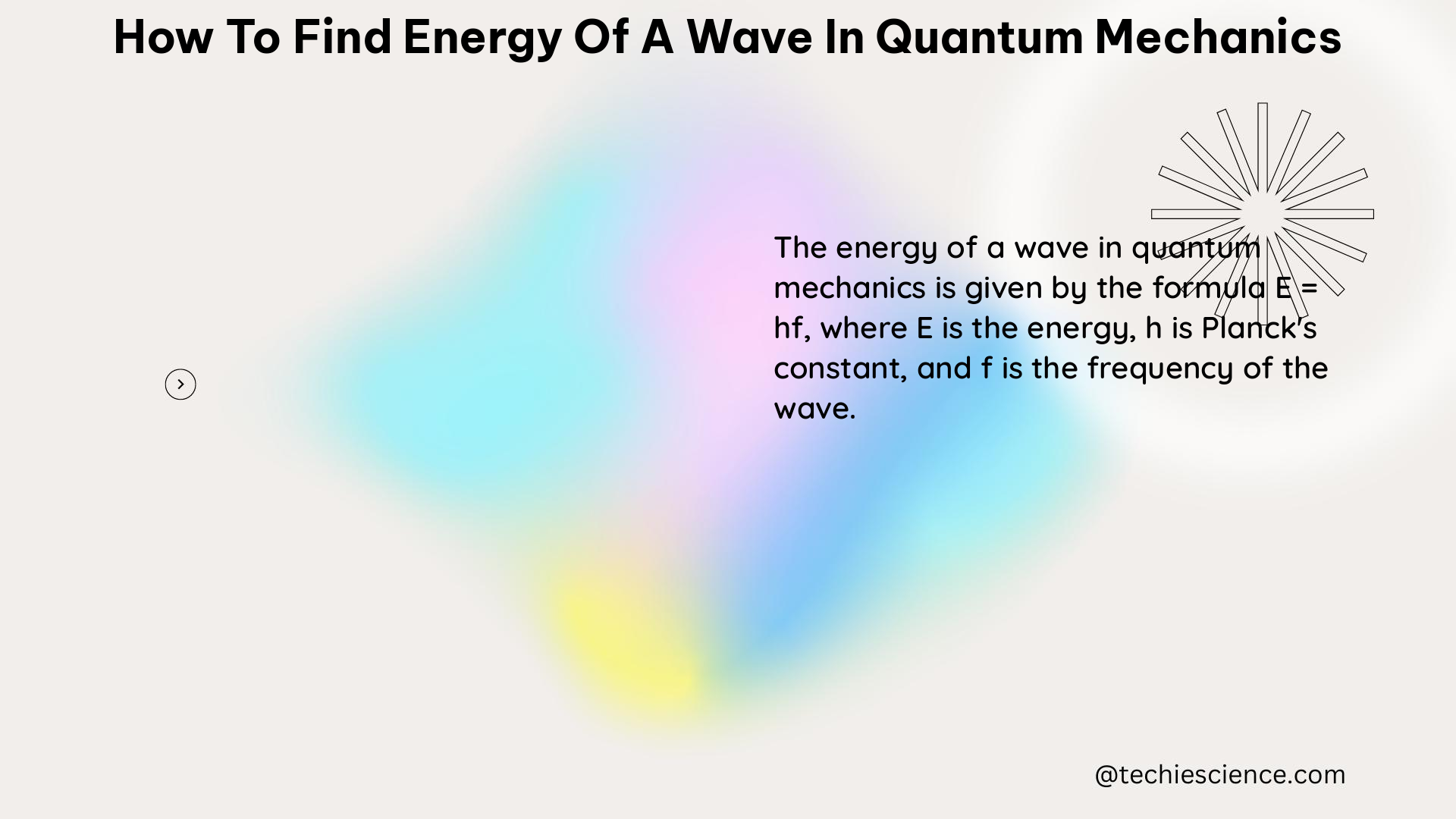In quantum mechanics, understanding the energy of a wave is crucial for analyzing the behavior of particles and systems at the atomic and subatomic scales. This comprehensive guide will walk you through the step-by-step process of determining the energy of a wave, covering both theoretical concepts and practical examples.
Determining the Wavefunction
The starting point for finding the energy of a wave in quantum mechanics is to determine the wavefunction, denoted as \(\psi(x,t)\). The wavefunction is a mathematical representation of the quantum state of a system and is governed by the Schrödinger equation.
For a particle confined between 0 and \(L\), the wavefunction can be expressed as:
\[\psi(x,t) = Ae^{-iEt/\hbar} \sin \left(\frac{\pi x}{L}\right)\]
where:
– \(A\) is the normalization constant
– \(E\) is the energy of the particle
– \(\hbar\) is the reduced Planck constant
Normalizing the Wavefunction

To ensure the wavefunction is properly normalized, we need to find the value of the normalization constant \(A\). This is done by integrating the square of the absolute value of the wavefunction over the entire region:
\[\int_{0}^{L} |\psi(x,t)|^2 dx = 1\]
Solving this integral gives:
\[A = \sqrt{\frac{2}{L}}\]
Calculating the Energy
The energy of the wave can be calculated using the time-independent Schrödinger equation:
\[-\frac{\hbar^2}{2m}\frac{d^2\psi}{dx^2} = E\psi\]
For a harmonic oscillator, the energy eigenvalues are given by:
\[E_n = \hbar\omega\left(n + \frac{1}{2}\right)\]
where:
– \(n\) is a non-negative integer
– \(\omega\) is the angular frequency
Measuring the Energy
In quantum mechanics, measuring the energy of a system involves finding the eigenvalues of the Hamiltonian operator. For a harmonic oscillator, the eigenvalues are given by the equation above.
It’s important to note that the act of measurement changes the quantum state, and the outcome is probabilistic, following the Born rule.
Example Calculations
Energy of a Harmonic Oscillator
For a harmonic oscillator with angular frequency \(\omega\), the energy eigenvalues are:
\[E_n = \hbar\omega\left(n + \frac{1}{2}\right)\]
For example, if \(\omega = 2\pi \times 10^6 \text{ rad/s}\) and \(n = 2\), the energy is:
\[E_2 = \hbar\omega\left(2 + \frac{1}{2}\right) = 2.5 \hbar\omega\]
Energy Density of a Light Wave
The energy density of a light wave is given by the square of the electric field strength:
\[U = |E|^2\]
For example, if the electric field strength is \(E = 10^3 \text{ V/m}\), the energy density is:
\[U = |10^3|^2 = 10^6 \text{ J/m}^3\]
Key Formulas
-
Time-Independent Schrödinger Equation:
\[-\frac{\hbar^2}{2m}\frac{d^2\psi}{dx^2} = E\psi\] -
Energy Eigenvalues for Harmonic Oscillator:
\[E_n = \hbar\omega\left(n + \frac{1}{2}\right)\] -
Energy Density of a Light Wave:
\[U = |E|^2\]
References
- Measurement in Quantum Mechanics
- Quantum Mechanics: Chapter 13
- Wavefunctions in Quantum Mechanics
- Quantum Mechanics Explained
- Quantum Mechanics: Energy Eigenvalues

The lambdageeks.com Core SME Team is a group of experienced subject matter experts from diverse scientific and technical fields including Physics, Chemistry, Technology,Electronics & Electrical Engineering, Automotive, Mechanical Engineering. Our team collaborates to create high-quality, well-researched articles on a wide range of science and technology topics for the lambdageeks.com website.
All Our Senior SME are having more than 7 Years of experience in the respective fields . They are either Working Industry Professionals or assocaited With different Universities. Refer Our Authors Page to get to know About our Core SMEs.